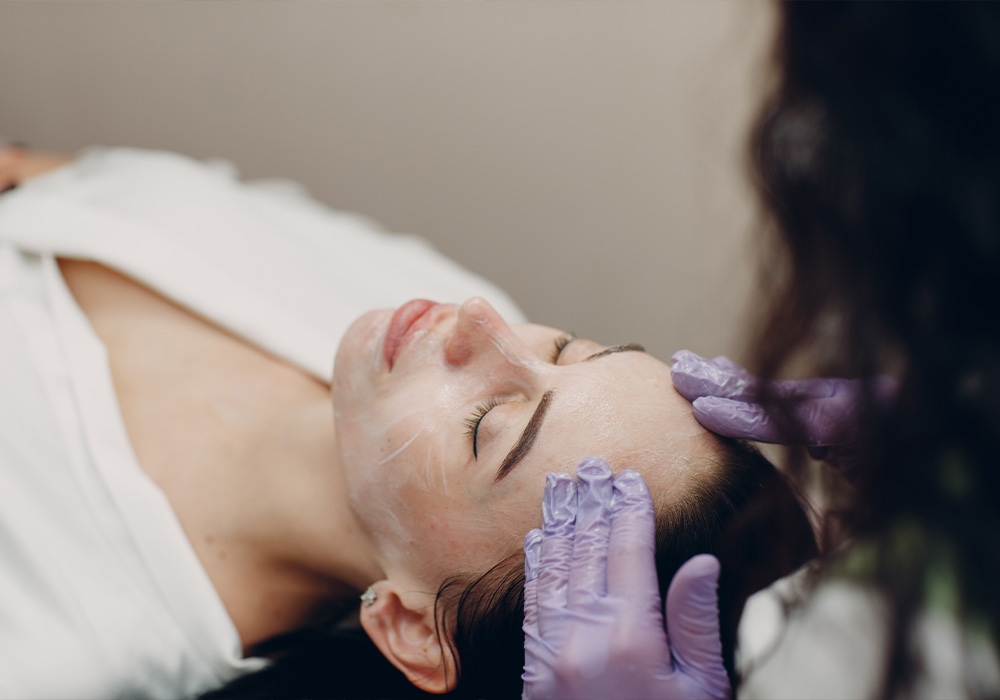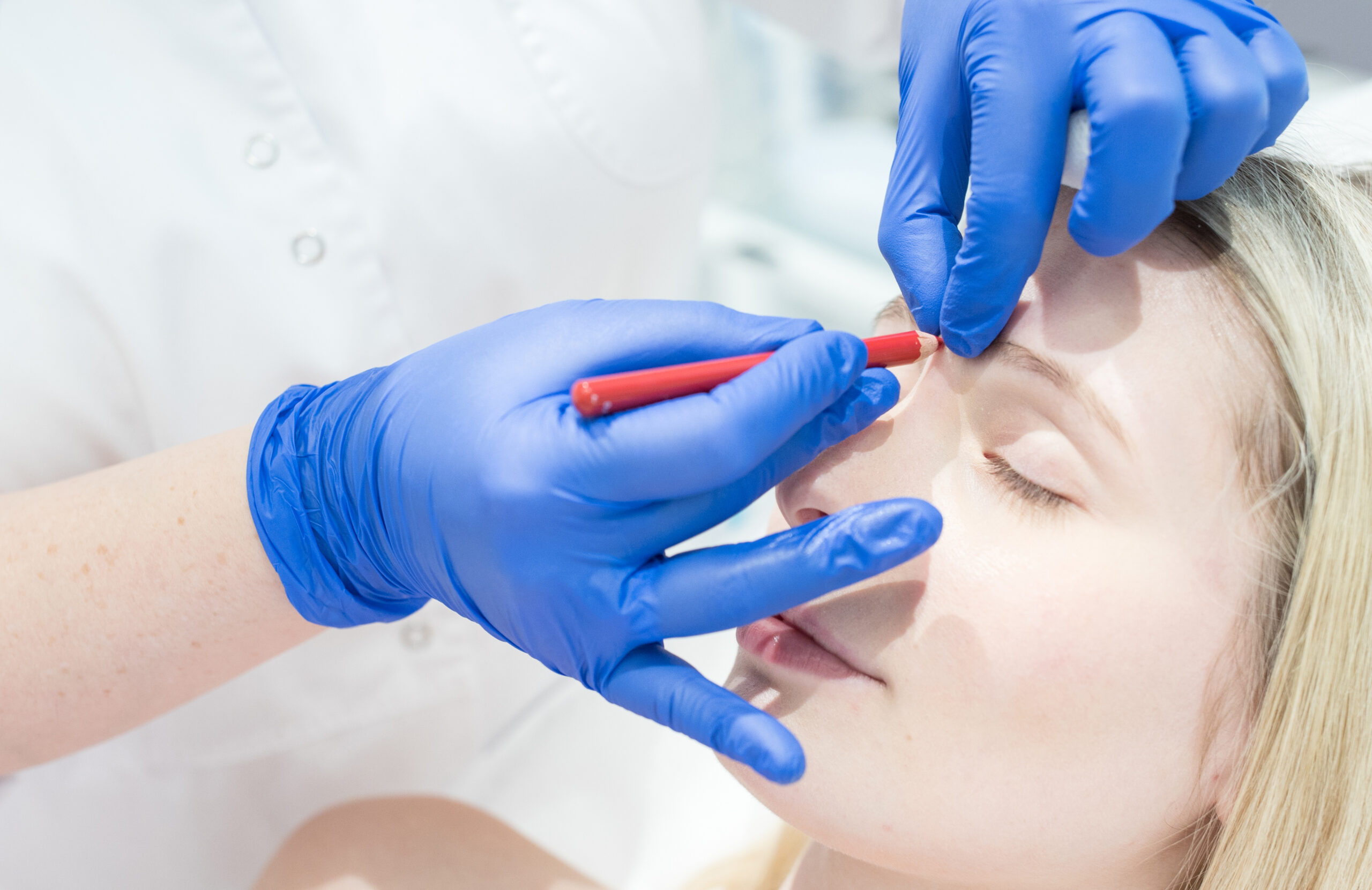The jawline is one of the most defining features of the human face. Framing the rest of the face and anchoring your features, the jaw and chin together form arguably the most important aspect of the face. For men, the ideal jawline can also function as a symbol for masculinity, confidence, and power.
Not everyone is born with the strong, square jaw of a comic book hero or Brad Pitt, and for those seeking to enhance a weak jawline, there are plenty of options available, both surgical and non-invasive.
Palto Alto, CA facial plastic surgeon Jill L. Hessler, MD explains that jaw enhancement could mean a lot of different things. “You really have to know what the patient is looking for. The jawbone is the whole mandible, but sometimes it’s only the front or chin that has increased recession,” Dr. Hessler says. “That can make the neck look like there is more of a double chin. The other thing that is becoming more common now is putting focus on the angle of the mandible that you see in the side profile, right below the ear.”
From tightening treatments and chin filler to implants and jaw surgery, we asked the experts everything you need to know about male jawline enhancement.
Skin Tightening
As we age, our skin becomes more lax. This can be particularly noticeable around the jawline, where our skin can create double chins or detract from the chiseled, defined look you want. Because the skin plays such a big role in the appearance of the jawline, non-invasive skin-tightening treatments are an excellent way to improve the look of your jaw.
Wayne, NJ facial plastic surgeon Jeffery B. Wise, MD explains with all the options out there, energy-based devices are a good place to begin. “There’s a multitude of options available for men today that range from nonsurgical to surgical,” Dr. Wise explains. “There are a lot of energy-based devices like Ultherapy or Morpheus that help with jawline enhancement.”
These devices use different methods to stimulate collagen in the skin, creating a tighter, more youthful appearance.
According to New York dermatologist Paul Jarrod Frank, MD, these devices work best on those with mild skin laxity. “We use various devices, like Ultherapy, for early stage laxity,” Dr. Frank. “We do this because definition of the male jawline is one of the most masculine aesthetic traits associated with men. We have the superhero-type jawlines that are usually used to represent the male aesthetic, so men are very conscientious about laxity, sagging, and drooping of the jawline area.”
Ultherapy utilizes ultrasound technology to stimulate collagen by safely heating the inner layers of skin. Radiofrequency devices function the same way except on more superficial layers of skin. To learn more about the differences between these two in-office treatments, check out this article.
For men, the appeal in these treatments is their simplicity. “Non-invasive heat devices are probably the simplest thing,” Dr. Frank explains. “They have no downtime and don’t make drastic changes, which men may be sensitive to. They do have a long-term permanence. They don’t take a lot of maintenance, which men like.”
Filler
Dr. Wise notes that the popularity of some filler and implants for jaw enhancement have risen recently. “It’s extremely popular for men to put filler in their jawline and a little bit of Botox in their masseter muscle to enhance the jawline, making it look more chiseled and sculpted.”
Filler produces more significant results than collagen-stimulating devices, but can also be used in tandem with those treatments.
“For more significant results, men will—either alone or in combination with skin-tightening treatments—do things like injectable fillers,” Dr. Frank explains. “We usually prefer biostimulatory filler, like Radiesse, which is a natural precursor to bone and cartilage in the body. I find that works very well. There are people that use various hyaluronic acid fillers as well, and this is to create a bony structure definition and lift in that area.”
There is a need to remain conservative with filler, though, to avoid weighing down the face. “For a lot of people, fillers, instead of helping to lift and define, can actually weigh down as people get older,” Dr. Frank says. “So as with all things, a little bit could be good; too much can be bad. This is where we usually consider surgical, or at least minimally invasive, options for people’s lower face.”
Implants
If you’re looking for a permanent option for jaw enhancement, you might be considering an implant. Typically, your surgeon will be placing a silicone implant along the jawline or in the chin. “Implants are made out of a solid silicone that can really smooth and define the jaw,” Dr. Hessler explains.
Jaw implants are performed via an incision in the inside of the mouth to eliminate any potential visible scarring. Most patients are able to resume normal activity within a week and will see complete results after swelling completely reduces around the three-month mark. When it comes to chin implants, the minor incision can be made inside the mouth or under the chin to hide the scar.
“It’s also really common to do an extended anatomical implant, also known as a chin implant in my office,” Dr. Wise says. “It wraps around the jaw, and it creates an incredible jawline that will last forever. Chin implantation with these special implants seems to be a really popular trend today in my practice.”
Cosmetic Jaw Surgery
This procedure, called orthognathic surgery, is often performed to correct irregularities in the jaw and teeth to improve function. “This is a much more vigorous surgical procedure where we cut the jawbone and move it forward,” Dr. Hessler explains. “We insert a plate in place and secure it with titanium screws.”
Cosmetic jaw surgery usually focuses on the lower jaw, which is called a mandibular osteotomy. Genioplasties are also an option, which is when a surgeon alters the jaw and restructures the chin at the same time. This kind of surgery usually requires a few days of a liquid diet, and it will take time for swelling to reduce enough to see the full extent of the changes made. “That’s a more permanent solution,” Dr. Hessler says.
What’s Next?
Social media’s influence on cosmetic treatments and procedures can’t be overstated. But when it comes to the overall desire for stronger, sharper features, jawline enhancement probably isn’t going anywhere.
“This isn’t so much of a trend in the terms of a new fad—people have always wanted this, but now it’s much more possible,” Dr. Hessler explains. “I doubt this look will go like buccal fat and fall by the wayside eventually, but I do think that the over-exaggerated social media look may fade with time.”
If anything, Dr. Hessler expects people to continue to move away from a heavy use of fillers. “Fillers are great in moderation,” she says. “But if people go overboard, it will look good in a photo, but as soon as they move their mouth, you’ll be able to see it.”
Additionally, the ease and convenience of these treatments only adds to their appeal. “The extreme look will probably go by the wayside, but the desire for stronger, sharper, more masculine features will stay around,” Dr. Hessler says. “Especially because now we have options that only take a few minutes.”

















